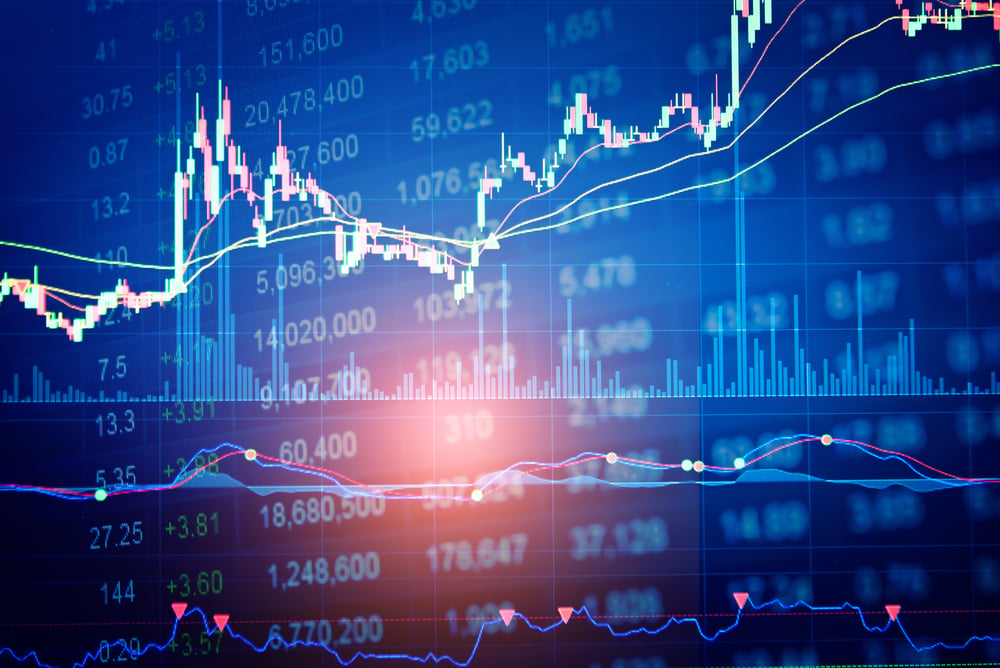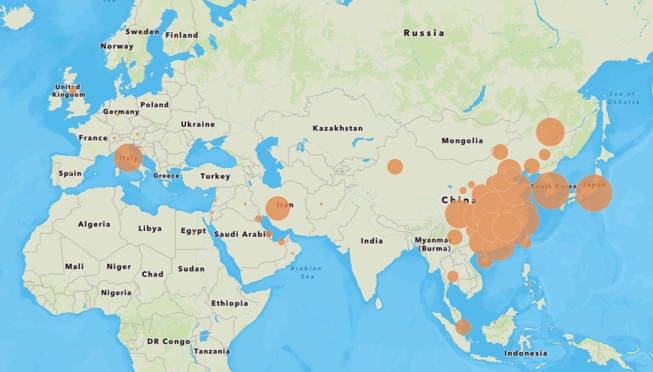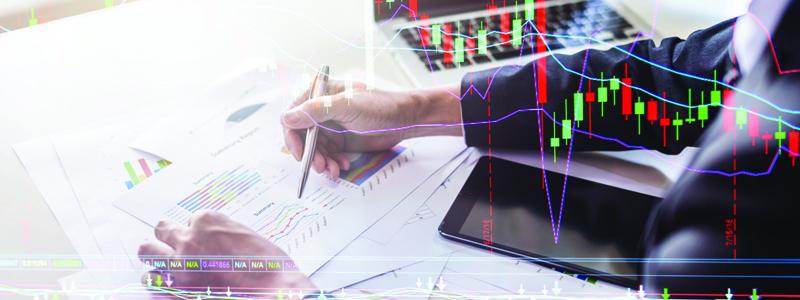Written By: Nate Garrison, CIO, World Investment Advisors Recap: What Happened Last Week? US Preside...
Mar 12, 2020
Market Bulletin: Don’t Fear the Bear
Yesterday, March 11th, 2020 the Dow Jones Industrial Average closed down more than 1,400 points, marking the end of a historic 11-year bull market for the index. The Dow closed at its peak on February 12th at 29,551.42, and subsequently fell 20.3% over the course of 19 trading days to end today at 23,553.22 – a technical bear market1. The 19 trading days it took for the Dow to reach bear market territory is one of the fastest on record for the index. For comparison, in previous downturns, the index has taken an average of 136 trading sessions to reach a bear market2.
Today, markets continued to trend lower following responses from the Trump administration and the European Central Bank that left investors feeling unsatisfied that governments were doing enough to combat the effects of this outbreak. The trading day ended with the Dow down close to 10% and the S&P 500 closing down over 9.5% (entering bear market territory itself), the worst day in the markets since Black Monday. So how did we get here? What does this mean? And what should we do moving forward?
How did we get here?
After weeks of dismissing the possible effects of an outbreak of the coronavirus disease (COVID-19) in China, investors grew suddenly alarmed about the potential downside risk to global growth as the disease outbreaks spread from mainland China to first South Korea, Iran, Italy, and now to over 110 countries and regions as of the writing of this article, according to Johns Hopkins University’s interactive web-based dashboard to track COVID-19.3
With this spread, the view of its effects on markets changed from a temporary supply chain disruption and some minor economic growth impairment in China, to a global threat that has the potential to have significant near-term impacts on both supply and demand in the global economy.
Government responses to the outbreak have included entire country quarantines, closing borders, banning travel to and from affected areas, as well as canceling all mass gatherings in many regions.
This has a profound near-term impact on local economies such as travel, entertainment, dining and other industries due to the immediate decline in consumers, as individuals exercise social distancing4 techniques to reduce the spread of this highly contagious disease.
From the shock caused by the coronavirus, and the commensurate steps to combat its spread, oil markets have experienced a sharp decline in demand; leading Saudi Arabia to suggest cutting oil production to help support the price of oil. After Russia did not agree to the production cuts (for fear that they would lose market share), Saudi Arabia decided to increase oil production and began a price war with Russia that sent oil prices down 21% on March 9th, the largest drop since the Gulf War5, and exacerbating the sell-off in the equity markets, driving the Dow Jones down 7.8% (more than 2000 points) in a single day.
That market decline continues as investors remain uncertain of the path of spread for the virus, its ultimate impact on global growth, and the timing for a global recovery.
What Does This Mean?
While comparisons to the 2008 financial crisis have permeated the discourse, it is important to note that the current market environment is vastly different from what we experienced in 2008. Admittedly, the world we live in today is a much more integrated global economy than it was in 2008 and the effects of the spread of the virus have been felt rather suddenly and severely.
Markets may remain volatile as the world gets a hold on the spread of this virus, the number of new cases start to decrease, a vaccine is developed, and the working-world begins to get back to normal.
These may be trying times – but bear markets are normal. They have occurred at least 12 times (measurements vary) in the S&P 500 index since the Great Depression and are typically followed by strong rebounds in the markets6 – though timing always varies. In fact, some of the strongest single-day gains in the S&P 500 have occurred while in bear market territory. So, while this may be an emotional time, not only from an investment but from a personal health and safety standpoint, these are also times that demonstrate the importance of investing in a way that allows you to ride out these volatile times.
So What Should We Do Now?
Remember, your retirement plan is intended for long-term investment. Attempts to time the market are rarely successful. Here’s what you can do:
- Don’t panic. Wash your hands.
- Look at your portfolio and asset allocation. You should have a well-diversified portfolio that is rebalanced through up-and-down markets. This should also be tailored to your appetite for risk and personal financial goals and time horizon. If you don’t know what any of this means, speak to a professional! The image below represents the annual returns of various asset classes for the last 10 years, with a sample asset allocation denoted in the blue box and orange star. While the asset allocation displayed in the table has never been the top-performing asset class in the last 10 years, it has never been the worst-performing either. Keeping an appropriate asset allocation based on your particular circumstances is an important factor to keep in mind with your retirement plan.

Source: Morningstar Direct (Please see disclosures at bottom of page)
- Don’t make extreme investment decisions driven by emotion or fear. Emotions can lead to some pretty costly investment decisions. Good days tend to follow bad days in the market. According to J.P. Morgan, over the last 20 years, six of the best 10 days occurred within two weeks of the 10 worst days7. Check out what would’ve happened to a $10,000 investment if it missed out on the best market-performing days.

Source: J.P. Morgan 2020 Guide to Retirement
- Stick to your plan and keep investing consistently through good times and bad. Investing the same amount on a regular basis is also called dollar-cost averaging. The term dollar-cost averaging refers to the average cost of the shares you purchase in relation to the average share price you paid. Because fluctuating markets allow you to buy more shares when prices are down and fewer when they’re up, your average share cost could be lower than your average share price paid. This takes decision-making and the need to “time the market” out of the equation. Here are five hypothetical investments with a $300 contribution each month.

This is a hypothetical example and does not reflect the performance of any specific investment. Dollar-cost averaging can’t guarantee you a profit or protection
from a market decline.
Money is emotional, but investing decisions, particularly for retirement savings, should be based on logic and fundamentals. Keeping a long-term strategy can help provide the peace of mind necessary to stay the course through volatile markets. As always, if you have any questions, please don’t hesitate to reach out to your Pensionmark team.
Looking for more information?
Webinar: 6 Tips for Coping with Market Volatility
Articles: Handling Market Volatility, Why Diversification Matters
Sources:
1. A bear market is when the price of an investment (such as the Dow Jones Industrial Average or the S&P 500) falls at least 20% or more from its recent peak.
2. Langley, A., 2020. Dow Jones Industrial Average’s 11-Year Bull Run Ends. [online] WSJ. Available at: <https://www.wsj.com/articles/global-markets-calmer-after-two-hectic-days-11583899913> [Accessed 12 March 2020].
3. Mapping 2019-nCoV. By Lauren Gardner, January 23, 2020. Reference: Dong E, Du H, Gardner L. An interactive web-based dashboard to track COVID-19 in real time. Lancet Infect Dis; published online Feb 19. https://doi.org/10.1016/S1473-3099(20)30120-1.
4. Public-health protection measure meant to reduce or slow the transmission of contagious disease, including self-quarantine and avoiding large-public gatherings.
5. Perper, R. and Bostock, B., 2020. Oil Is Down 21% After Its Biggest Drop In Decades Following Saudi Price Cuts That Sparked A Race To The Bottom With Russia. [online] Business Insider. Available at: <https://www.businessinsider.com/oil-price-crash-market-drop-global-price-war-futures-coronavirus-2020-3> [Accessed 12 March 2020].
6. Morningstar, Returns from 1926 – 2019.
7. J.P. Morgan 2020 Guide to Retirement.
*Large Cap: S&P 500; Small Cap: Russell 2000; EM: MSCI EM; Commodities: Bloomberg Commodity; High Yield: Barclays Global High Yield; Fixed Income: Barclays US Agg Bond; DM: MSCI EAFE; Cash: Barclays US Treasury Bill 1-3 Month; REIT: FTSE NAREIT; “Asset Allocation” portfolio assumes 25% S&P 500, 10% Russell 2000, 15% MSCI EAFE, 5% MSCI EM, 25% Barclays US Agg Bond, 5% Barclays Global High Yield, 5% US Treasury Bill 1-3 Month, 5% Bloomberg Commodity, and 5% FTSE NAREIT.
This information is not intended as a solicitation or an offer to buy or sell any security or investment product. Past performance is not indicative of future returns. Information is solely intended for recipients in jurisdictions where the named advisor(s) are licensed to engage the investing public. Investments and strategies mentioned may not be suitable for all investors. The S&P 500 and other such indices are unmanaged, do not incur fees or expense, cannot be invested into directly and individual investor’s results will vary. As with all investments, various risks may exist and Pensionmark Financial Group, LLC recommends you consult with your financial advisor prior to making any investment decisions. This document is a general communication being provided for informational purposes only. It is educational in nature and not designed to be taken as advice or a recommendation for any specific investment product, strategy, plan feature or other purpose in any jurisdiction. Any examples used are generic, hypothetical and for illustration purposes only. This material does not contain sufficient information to support an investment decision and it should not be relied upon by you in evaluating the merits of investing in any securities or products. In addition, users should make an independent assessment of the legal, regulatory, tax, credit, and accounting implications and determine, together with their own professional advisers, if any investment mentioned herein is believed to be suitable to their personal goals. Investors should ensure that they obtain all available relevant information before making any investment. Any forecasts, figures, opinions or investment techniques and strategies set out are for information purposes only, based on certain assumptions and current market conditions and are subject to change without prior notice. All information presented herein is considered to be accurate at the time of production, but no warranty of accuracy is given and no liability in respect of any error or omission is accepted. It should be noted that investment involves risks, the value of investments and the income from them may fluctuate in accordance with market conditions and taxation agreements and investors may not get back the full amount invested. Both past performance and yields is not a reliable indicator of current and future results.
You may also like
Feb 25, 2020
Key Takeaways: On February 24, 2020 the S&P 500 closed the day down -3.4% – its largest single-d...
Aug 17, 2023
Publicly traded companies are required to disclose their financial performance to regulators and sha...









